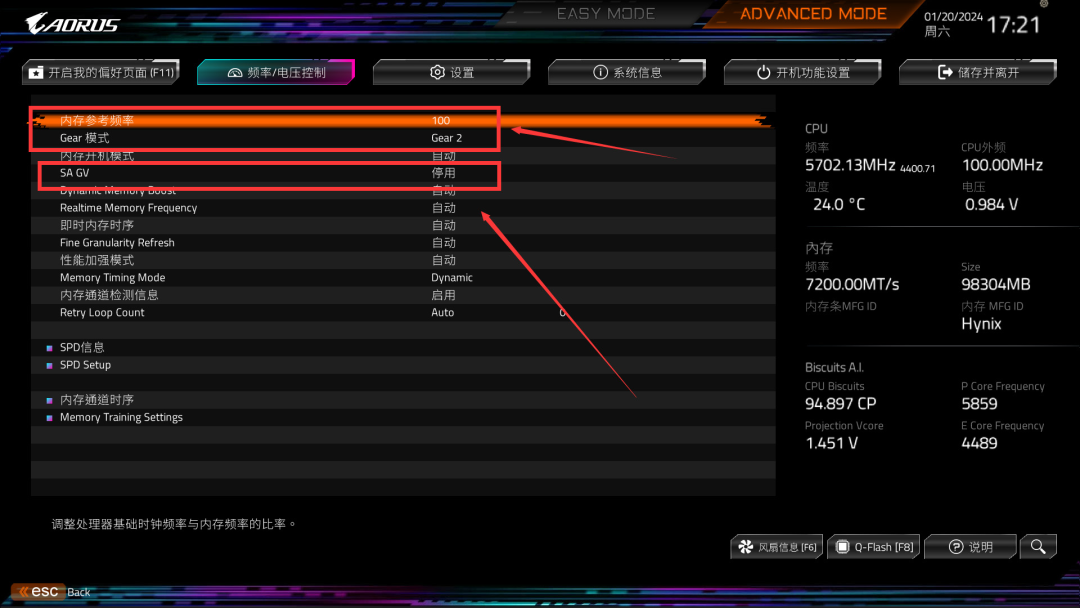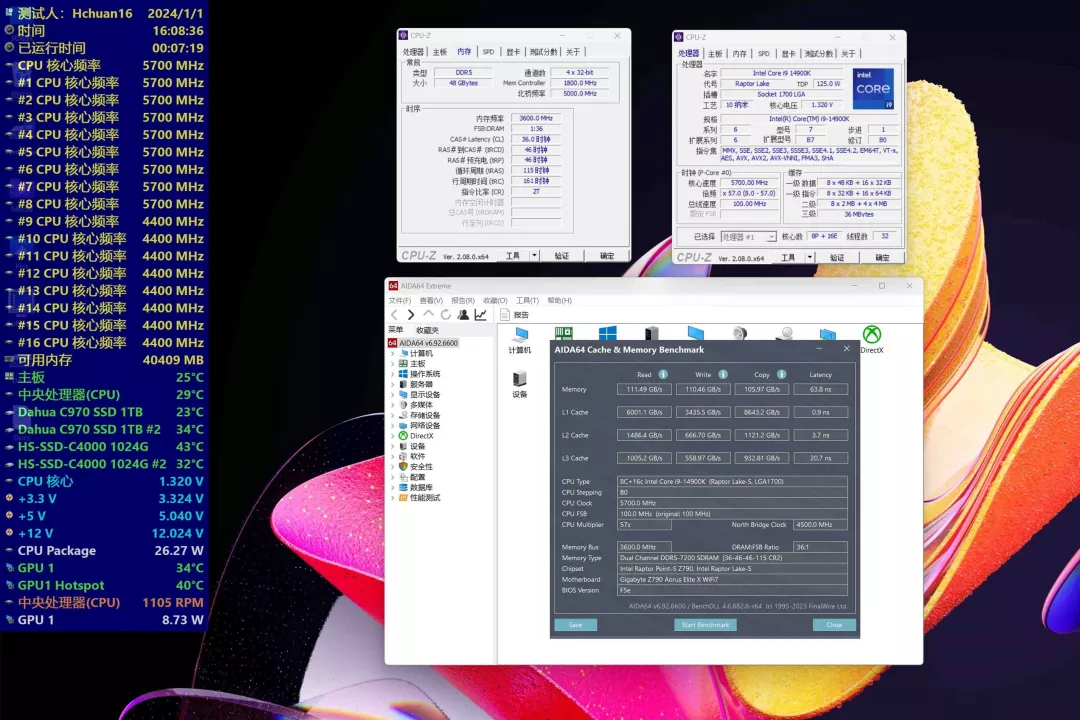● For a low-range CPU, whatever the brand, to overclock these four RAMs at 6000MHz+C32 is a success.
● For a combo of a mid-range CPU and four-slot Z series mobo, oc settings stable at 6400MHz+C32.
● For a combo of a mid-range CPU plus a first-class four-slot Z series mobo, oc settings stable at 6800MHz+C34.
● For a high-range CPU and four-slot Z series mobo, there could be higher capabilities to strike a RAM setting at 7600MHz+C36 and over.
For mine, a mid-range CPU with a high-range mobo, I overclocked the RAM modules to 7200MHz at C34. Just keep tweaking the voltages to get a smooth boot-up.
Voltages are the key. I tweaked the settings for these 7200MHz four-RAM config the same as those of 8000MHz two-RAM, with only values of VDD2 and memory voltage a bit lower.Below are some screenshots for your reference. Firstly, enter BIOS and click on "Frequency/Voltage Settings".● Disable the choices in the red box.
● Change the frequency to your taget value.
Do not set up too high a frequency for the first overclocking try.Then enter "Advanced Memory Settings" to do the following tweaking:
● Memory Reference Frequency to 100
● Gear to Gear2
.

Next, enter "Memory Timings" and change the items in the red box as shown below:
● tCL to 34
● tRCD to 48
● tRP to 48
● tRAS to 78
I gave a rather loose setup to try out the overclocking under 7200MHz.
After that, go back to "Frequency/Voltage Settings" and do the following changes:
● CPU System Agent Voltage to 1.30V, if TM5 failed, give an extra ±0.01V tweak.
● VDDQ CPU voltage to 1.32V, if TM5 failed, give an extra ±0.005V tweak.
● VDD2 CPU voltage to 1.42V, if TM5 failed, give an extra ±0.01V tweak.
I gave a rather low voltage on VDDQ and VDD2 at first and then tried to either increase or decrease at a minor value each time to press the testing.
Then go to "Memory Voltage Settings" and do the tweaking in the red boxes:
● VDDQ to 1.42V, if TM5 failed, give an extra ±0.005V tweak.
● VPP to 1.9V.
Same as settings for CPU voltages, minor value adding and dropping. Then save and exit to reboot the computer. Go looping the above steps to try out for a successful oc boot-up.Below is the benchmarking with 6800MHz+C34 XMP enabled at High Bandwidth and Low Latency mode:
● Reading at 106.30GB/s, a 5.99% up from that with only XMP enabled.
● Writing at 107.08GB/s, a 5.77% up from that with only XMP enabled.
● Copying at 106.47GB/s, a 6.01% up from that with only XMP enabled.
● Latency at 62.0ns, a 6.13% improvement from that with only XMP enabled.
Below is the benchmarking in 7-Zip:
● A score of 224.323GIPS after 10 rounds of running, a 1.84% boost from that with only XMP enabled.
Which seems to be a minor progress, but it's a huge boost for a multi-task operation.Below is the comparison between the memory RAMs at a four-slot use versus two-slot use under the same config of 7200MHz+C36 at High Bandwidth and Low Latency mode.
● Read: Two 7200MHz RAMs at 111.49GB/s, a 4.88% better than that of four 7200MHz RAMs.
● Write: 110.46GB/s, a 3.16% increase.
● Copy: 105.97GB/s, a 0.47% decrease.
● Latency: 63.8ns, a 2.90% improvement.
Literally, it takes two to tango. So if the performance of two RAM sticks could meet your need, two would be an enough choice.

The article was originally posted on the WeChat Official Account of KingBank in Chinese; the English version was excerpted.
Original article link: https://mp.weixin.qq.com/s/UEbzQegU3HAxRTc-Tehsaw
Scan to follow us:


